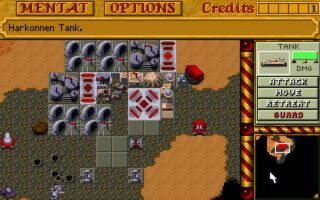Dune II and the Birth of Real Time Strategy (RTS) Games
![]() By: GN Team
By: GN Team
Published: 5 July 2025, 3:12 pm
Real Time Strategy games represent one of the most influential and enduring genres in computer gaming history. Unlike turn-based strategy games where players take sequential turns to make moves, RTS games unfold continuously in real time, demanding split-second decision making, resource management, and tactical coordination. Players typically control armies, manage economies, construct buildings, and engage in warfare while the game clock never stops ticking. This creates an intense experience that combines the cerebral challenge of traditional strategy games with the immediate excitement of action games.
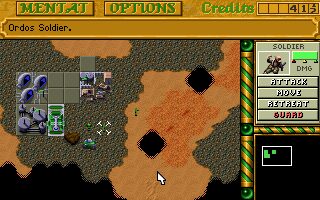
The Early Experiments
Before Dune II established the RTS template, several pioneering developers were already exploring the possibilities of real-time strategy gaming. Danielle Berry, at Ozark Softscape, created one of the earliest examples with Command H.Q. in 1990. This ambitious title attempted to blend real-time military operations with grand strategy elements, featuring a global map where players could command modern military forces across multiple theaters of war. While Command H.Q. struggled with interface limitations and the technological constraints of early 1990s hardware, it demonstrated that real-time strategy could work on personal computers.
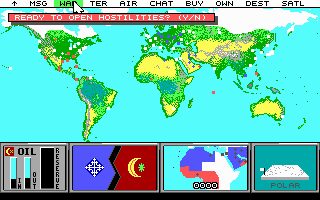
The game featured simultaneous movement of units across a world map, with players able to zoom in on specific regions for tactical combat. Berry's design included supply lines, logistics management, and the need to coordinate multiple fronts simultaneously.
Even more popular was Bullfrog Productions' Populous, designed by Peter Molyneux and released in 1989. While not strictly an RTS in the traditional sense, Populous introduced several concepts that would become fundamental to the genre. Players assumed the role of a deity, manipulating terrain and guiding followers in real-time conflicts against opposing civilizations. The game featured resource management through mana collection, real-time unit control, and direct interaction with the game world through mouse-driven interface design. It's one of the best Amiga games ever created.
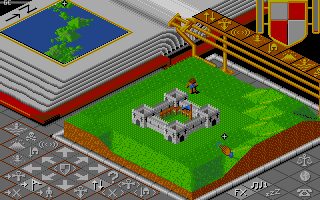
Populous demonstrated that complex strategy games could be both accessible and engaging when presented with intuitive controls and immediate visual feedback. The game's success demonstrated to publishers that there was a market for innovative strategy games that diverged from traditional turn-based formulas. Its influence extended beyond gameplay mechanics to interface design, proving that mouse-driven controls could handle sophisticated strategic decision-making.
The Revolutionary Masterpiece
Dune II: The Battle For Arrakis, released in 1992 by Westwood Studios, represents the true birth of the modern RTS genre. Designed and programmed by Joseph Bostic (who also worked on Eye of the Beholder) and Aaron E. Powell, the game was developed independently from Cryo Interactive's adventure game Dune, despite both sharing the same license. Originally, Virgin Interactive planned to cancel the Cryo adventure game to focus on Westwood's strategy title, but ultimately decided to keep both projects, leading to Westwood's game being renamed Dune II: The Battle For Arrakis to distinguish it from the other title. The development team was inspired by Herzog Zwei on the Sega Genesis after Graeme Devine, a Virgin employee, suggested that Westwood look at the game for design ideas. Westwood agreed to make a resource strategy game based on Dune with this type of real-time gameplay, setting out to create a real-time strategy experience that would be accessible to mainstream audiences while maintaining strategic depth.
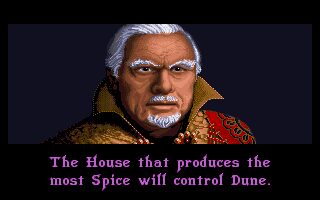
The game's connection to Frank Herbert's Dune universe provided the perfect backdrop for RTS gameplay. The desert planet Arrakis, with its valuable spice deposits and harsh environment, created natural resource scarcity that drove conflict between the three Great Houses: Atreides, Harkonnen, and Ordos. This setting allowed Westwood to implement economic warfare alongside military conquest, as controlling spice harvesting operations became just as important as commanding armies.
Dune 2's revolutionary gameplay mechanics established virtually every convention that would define the RTS genre for decades to come. The game introduced the concept of base building as a core strategic element, with players constructing refineries, factories, and defensive structures using a simple point-and-click interface. The construction yard served as the heart of each base, creating a vulnerable target that encouraged both defensive planning and offensive strikes against enemy infrastructure.

Resource management became a central pillar of gameplay through the spice harvesting system. Players deployed harvester units to collect spice from desert deposits, creating a constant flow of income that funded military production and base expansion. This system introduced the fundamental RTS tension between economic development and military preparedness, as players had to balance immediate defensive needs against long-term economic growth.
The unit production system established another genre cornerstone through factory-based manufacturing. Different structures produced different unit types, from light infantry emerging from barracks to heavy tanks rolling out of vehicle factories. This created strategic depth through production queue management and encouraged players to diversify their military capabilities rather than relying on single unit types.
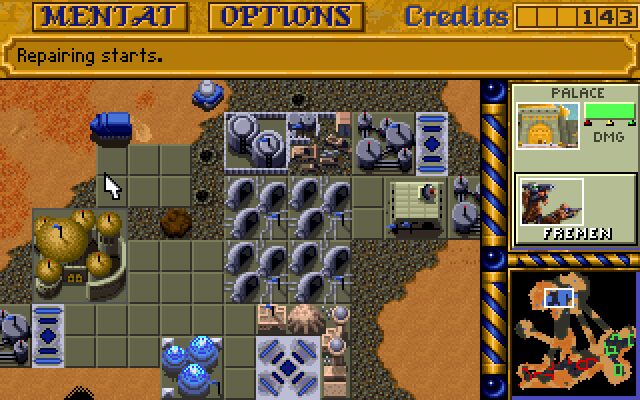
Combat mechanics in Dune II: The Battle For Arrakis emphasized tactical positioning and unit composition over pure numbers. Different units had specific strengths and weaknesses, encouraging players to build combined arms forces rather than overwhelming enemies with single unit types. The game featured infantry, light vehicles, heavy tanks, and aircraft, each with distinct roles and tactical applications. Terrain played a crucial role, with rocky outcroppings providing cover and open desert favoring different tactical approaches.
The fog of war system added uncertainty and encouraged reconnaissance, as players could only see areas within range of their units. This created opportunities for ambushes, flanking maneuvers, and surprise attacks, while also making scouting and intelligence gathering crucial strategic elements. The shroud system meant that even previously explored areas would become dark again when no friendly units were present, maintaining tension throughout the game.

Perhaps most importantly, Dune II's interface design solved the fundamental challenge of real-time strategy control. The game featured intuitive mouse-driven commands, with right-clicking for movement and left-clicking for selection and targeting. Context-sensitive cursors provided immediate feedback about possible actions, while a mini-map display allowed players to monitor the entire battlefield at a glance. These interface innovations made complex strategic gameplay accessible to players without requiring extensive manual study or complicated keyboard commands.
The Genre Explodes
The success of Dune II: The Battle For Arrakis triggered an explosion of innovation in real-time strategy gaming that would define PC gaming throughout the 1990s. Each subsequent release built upon Westwood's foundation while introducing new mechanics and refinements that pushed the genre forward.
Blizzard Entertainment's WarCraft: Orcs & Humans, released in 1994, took Dune II's formula and refined it with superior production values and enhanced multiplayer capabilities. The game introduced several innovations that would become genre standards, most notably the concept of racial asymmetry in unit capabilities. While Dune II's three factions were relatively similar in their basic unit types, WarCraft's Orcs and Humans possessed distinctly different magical abilities and unit characteristics. Human Paladins could heal friendly units, while Orc Necromancers could raise undead warriors from fallen enemies.
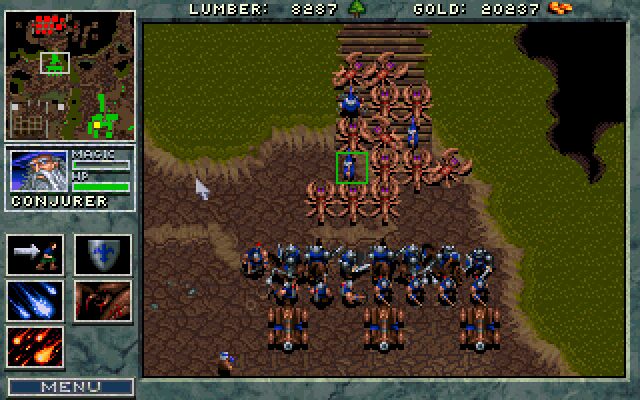
The game also pioneered the use of fantasy settings in RTS games, moving away from science-fiction themes to embrace sword-and-sorcery aesthetics. This shift opened up new possibilities for unit design and magical gameplay mechanics that wouldn't fit in more realistic military settings. WarCraft's magic system added a new layer of strategic depth, as players had to manage mana resources alongside traditional economic concerns.
Most significantly, WarCraft featured robust multiplayer support through local area networks and modem connections. While Dune II was primarily a single-player experience, WarCraft was designed from the ground up to support competitive multiplayer gaming. This focus on player-versus-player combat would prove crucial to the genre's long-term success, as human opponents provided endless variety and challenge that AI opponents couldn't match.
Westwood Studios returned to the genre with Command & Conquer in 1995, a spiritual successor to Dune II that pushed the boundaries of RTS presentation and storytelling. The game introduced full-motion video cutscenes with live actors, creating a cinematic experience that elevated the stakes of strategic warfare. Players could choose between the Global Defense Initiative, representing established military forces, or the Brotherhood of Nod, a terrorist organization seeking to overthrow the existing world order.

Command & Conquer's faction design emphasized asymmetric gameplay more strongly than any previous RTS. GDI forces relied on conventional military tactics and heavy armor, while Nod employed stealth technology, chemical weapons, and guerrilla warfare tactics. This asymmetry extended to base building, with GDI constructing heavily fortified installations while Nod built more flexible, mobile structures.
The game also introduced the concept of destructible terrain, allowing players to reshape battlefields through explosive weapons and environmental hazards. Tiberium, the game's central resource, created environmental dangers that added tactical complexity to resource gathering and base placement. Areas with high Tiberium concentration would become increasingly toxic over time, forcing players to balance economic opportunities against environmental risks.
Blizzard's Warcraft II: Tides Of Darkness, released in 1995, represented a quantum leap in RTS sophistication and presentation. The game featured dramatically improved graphics with detailed sprite animations and atmospheric environmental effects. Naval warfare became a major strategic element, with players constructing shipyards to build warships, submarines, and transport vessels. This maritime dimension added new layers of strategic complexity, as players had to coordinate land, sea, and air operations across multiple theaters.
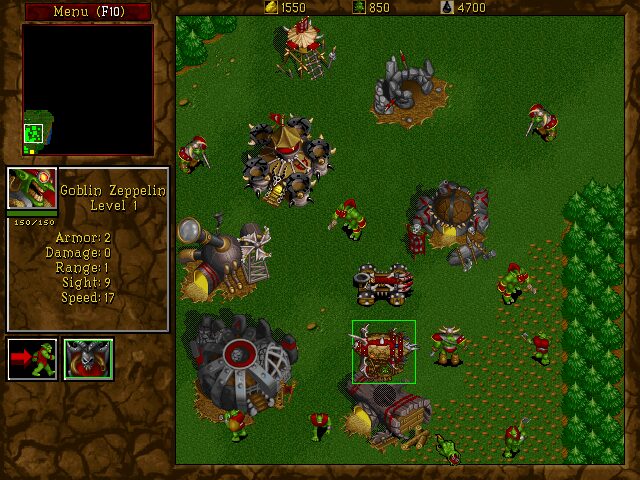
The game's magic system became more sophisticated, with multiple spellcaster units possessing different magical abilities. Mages could cast area-effect spells that devastated enemy formations, while Death Knights could raise skeleton warriors and cast destructive spells. This magical warfare created new tactical possibilities and encouraged players to develop combined arms strategies that integrated conventional military units with magical support.
WarCraft II also pioneered the concept of upgradeable units, allowing players to research improvements that enhanced their military capabilities. Blacksmith upgrades could improve armor and weapons, while lumber mills could increase the efficiency of resource gathering. This upgrade system added progression elements that rewarded long-term planning and economic development.
Ensemble Studios' Age of Empires, released in 1997, revolutionized the RTS genre by introducing historical progression and technological advancement as core gameplay mechanics. Rather than maintaining static technology levels throughout the game, players advanced through four distinct historical ages, from the Stone Age to the Iron Age. Each advancement unlocked new units, buildings, and technologies that fundamentally changed strategic possibilities.
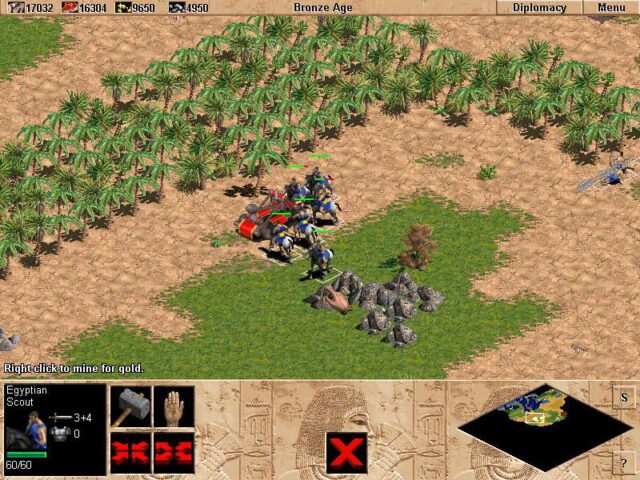
The game featured multiple civilizations with unique bonuses and special units, encouraging players to explore different strategic approaches based on their chosen culture. Egyptian players might focus on naval superiority and wonder construction, while Babylonian players emphasized defensive strategies and technological advancement. This civilization-based design added tremendous replay value and strategic depth.
The game's economic system became more complex than previous RTS titles, featuring four different resources: food, wood, stone, and gold. Each resource had specific applications and gathering methods, creating intricate economic puzzles that required careful planning and resource allocation. Villagers became crucial strategic units, as their economic productivity directly influenced military capabilities.
The Pinnacle of Innovation
Blizzard Entertainment's Starcraft, released in 1998, represents the culmination of RTS evolution during the genre's formative decade. The game achieved perfect asymmetric balance between three radically different factions: the human Terrans, the insectoid Zerg, and the psychic Protoss. Each race possessed completely unique unit types, production methods, and strategic capabilities that required mastery of entirely different tactical approaches.
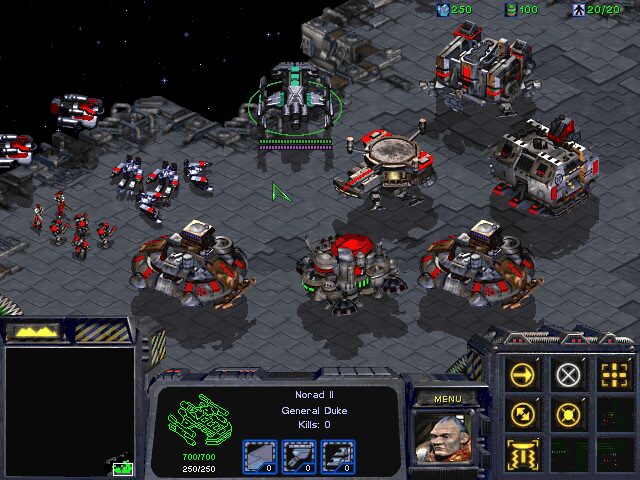
Terran forces emphasized versatility and defensive capabilities, with buildings that could lift off and relocate, marine units that could be enhanced with medic support, and siege tanks that could devastate enemy positions from long range. The Terran production system relied on supply depots for population support and add-on structures that enhanced building capabilities.
Zerg gameplay revolved around organic growth and overwhelming numbers, with all units spawning from larvae produced by hatcheries. The Zerg could rapidly expand across the map through creep spreading, while their units featured unique abilities like burrowing and rapid regeneration. Zerg players had to master aggressive expansion strategies and tactical flexibility to succeed.
Protoss forces combined advanced technology with powerful individual units, featuring energy shields, telepathic abilities, and devastating late-game units like carriers and archons. Protoss buildings required power from pylons to function, creating strategic vulnerabilities that enemies could exploit. The race emphasized quality over quantity, with expensive but powerful units that required careful tactical deployment.
StarCraft's single-player campaign featured an interconnected storyline that followed all three races through a complex political and military conflict. The game's narrative presentation set new standards for RTS storytelling, with professional voice acting, detailed briefings, and character development that made players emotionally invested in the outcome.
The game's impact extended far beyond technical innovations to establish competitive RTS gaming as a legitimate sport. Starcraft's perfectly balanced gameplay and high skill ceiling made it ideal for professional competition, particularly in South Korea where it became a national obsession. The game's influence on esports cannot be overstated, as it proved that RTS games could provide compelling spectator entertainment and support professional gaming careers.
The Lasting Legacy
The decade following Dune II's release saw the real-time strategy genre evolve into one of gaming's most influential and enduring forms. Each major release, like Age of Empires II: The Age of Kings, built upon previous innovations while introducing new concepts that expanded the genre's possibilities. From Command HQ's early experiments to Starcraft's competitive perfection, the RTS genre's rapid evolution demonstrates the power of iterative design and creative innovation.
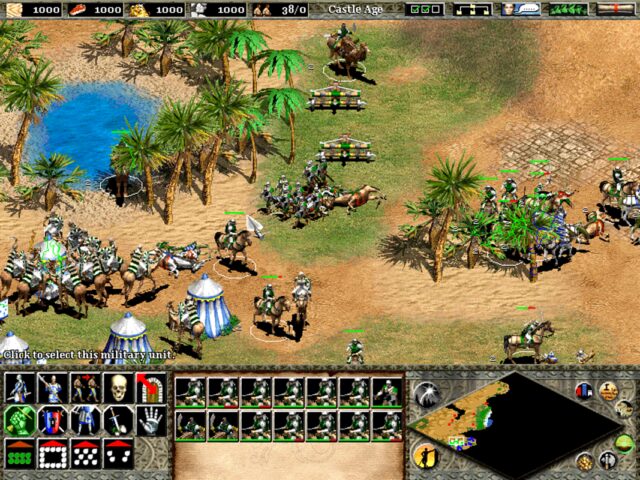
These foundational games established gameplay mechanics and design principles that continue to influence strategy games today. The base building, resource management, and real-time tactical combat that Dune II: The Battle For Arrakis pioneered remain core elements of modern RTS games, while the asymmetric faction design and competitive multiplayer focus introduced by later games continue to drive innovation in the genre.
The success of these early RTS games also demonstrated that complex strategy gaming could appeal to mainstream audiences when presented with intuitive interfaces and engaging presentation. The genre's emphasis on both strategic depth and accessible gameplay helped establish PC gaming as a legitimate platform for sophisticated interactive entertainment, paving the way for the diverse and innovative strategy games that continue to emerge today.

